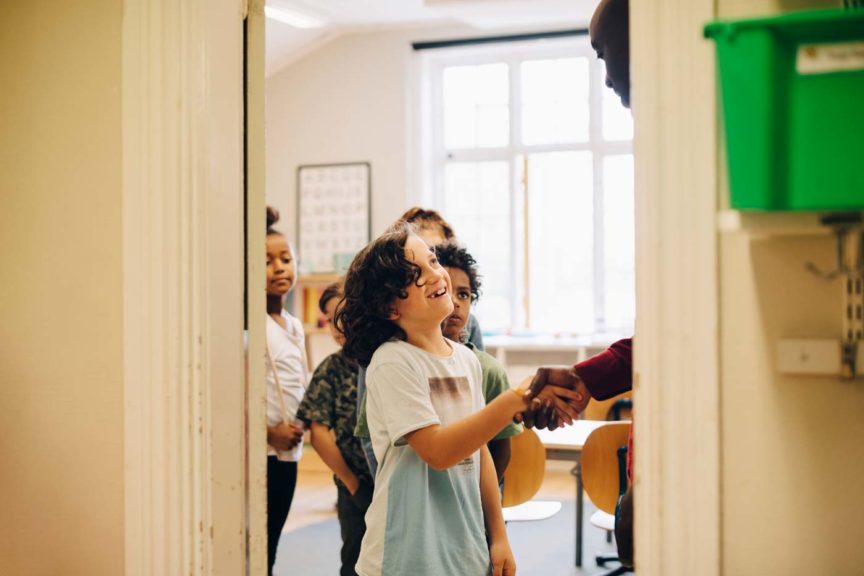There is a time in ministry when we need to evaluate how effective we’re being with behavior management as it relates to the 1.
You see, although there are 99 sheep in the pasture, the shepherd makes sure the 1 is not lost. This teaching definitely has application when we’re working with children with special needs.
Don’t lose even 1 because of a behavioral issue.
Instead of seeing children with behavioral needs as a problem, let’s try to see them as the 1 we need to tend to, while still taking care of the 99.
So, let’s begin by asking ourselves a few tough questions.
- What do I do with kids who don’t fit the mold of our current kidmin programming?
- How do I work with kids who seem to act out all the time?
- How do I react to children with sensory differences? Or learning disabilities?
- Is it possible to equip my volunteers and kidmin leaders with tried and true techniques to engage groups of kids and address different behavior issues?
The answer to this last question is a Great BIG YES!

If you’ve paid attention to a football game, you know that each team wants to be on offense more than defense. Behavior management with kids is the same way—being on offense is how you make real progress!
We can often prevent behavior management issues before they arise.
So often we get stuck on defense—reacting to behaviors, rather than being proactive.
But when we have a healthy perspective, take the time to be prepared, and understand the needs of our kids, we can usually even prevent behavior problems before they arise.
Let’s tackle this with some practical thoughts.
1. Behavior is a way of communicating.
You don’t need an infant to use words to relay that they are hungry or have a dirty diaper. Right?
And someone sitting with their arms crossed on the opposite end of the couch from you is giving a pretty good indication that they are not in the mood to engage in conversation and are definitely not feeling amorous.
What might a child’s behaviors be telling you?
Sometimes it pays to put on your “detective hat” and find out more information.
What can you discern about the child, their family, their home life, maybe even their eating schedule, health concerns, previous experiences in similar settings, and their interactions with other kids.
What you learn by observing these circumstances will give you direction in what you might be able to change to better manage behavior.
You may need to modify how your room is set, the way teaching time is structure (and communicated), the types of activities you use in a lesson, or even in the way you interact with this child.
And remember, children will look to you as an example for how to treat one another. Always lead in love—especially when it is difficult to move beyond the behavior to the real reason a child is acting out.
2. Take a cue from the Boy Scouts: Be Prepared!
When you walk into the room 5 minutes before (or—GASP—even after!) the kids arrive and expect to gather up your materials, learn your lesson for the day, and quickly find some extra items or helpers, you may have lost the “ball” already.
You’ll be on defense the entire time. This makes managing behavior all the more challenging.
To start the day on offense, you’ve got to be prepared. Know your lesson, organize your materials and your space, and be ready to greet kids as they enter your children’s ministry.

Give kids a purpose—something to do and focus on—as soon as they arrive. Eliminating “dead time” can go a long way in behavior management. Your kids won’t even have a chance to start looking for their own ways to occupy their time (or ways to cause mischief)!
Also, when you know your material well, it’s much easier to adapt your lesson as you see that kids need a different way to access the material, or a new way to interact with it so they can fully engage.
Helpful hint: HeartShaper Children’s Curriculum is a great resource for children’s ministry leaders because it includes adaptations right along with the lesson plan. This makes being prepared easier!
Objects, pictures, stories to go along with concepts, and a posted schedule for the day (with pictures or icons is ideal!) can greatly help kids know what to expect. This can help alleviate anxiety about what they’ll be doing and when things will be happening.
3. Sensory processing differences can be a very real factor in how a child behaves—and rest assured these kids are not making it up or just trying to ruin your day!
For some, the anxiety of a loud social interaction time is enough to send them running. For others, the requirement to sit still for more than 10 minutes causes great distress.
What is too loud? Too bright? Do you have visuals that add to the content and make it easier to understand? How much visual stimulation is too much?
Again, this is a chance to play detective—get to know each child individually and the areas where they differ from one another.
When you know you have a child who processes a sensation more intensely and another child who requires a great deal of that sensation to even register it, you’ll know how adapt so they can fully engage in the lesson you’re teaching.
Sensory processing issues can occur in the areas of sound, sight, touch, taste, smell, and even balance and body-awareness. These issues often result in challenges with behavior management.
One child may be constantly leaning on others because he doesn’t have a sense of his own position in space. Another child may stick to the corners because she feels unsteady in wide open spaces. Some children may prefer hiding behind something due to the over-abundance of visual stimulation, while overs cover their ears because the music is painfully loud. Perhaps one child even feels all of this and more!
Remember that the kingdom of God belongs to such as these.
Don’t worry if you don’t feel prepared to take on all of these behavior management issues. You can do it! There are resources available for learning about differences like this in kids, many available at clcnetwork.org/shop.
Free ideas and tips are also available in the Sensory Toys post on Ministry Spark and at clcnetwork.org/blog.
And let’s not discount the power of prayer, the guidance of the Holy Spirit, or the fact that each child is created in God’s image.

“Suppose one of you has a hundred sheep and loses one of them. Doesn’t he leave the ninety-nine in the open country and go after the lost sheep until he finds it?And when he finds it, he joyfully puts it on his shoulders and goes home.”
Luke 15: 4-6, NIV
Don’t lose even 1 because of a behavior management issue. There is more happening behind the scenes than you can possibly realize.
Before getting frustrated by behavioral issues, or even feeling defeated, remember that the kingdom of God belongs to such as these.
Let’s introduce kids to Jesus in the best way possible. Let’s pay attention, be prepared, and understand the varying needs of the kids in our ministries.
“Jesus said, ‘Let the little children come to me, and do not hinder them, for the kingdom of heaven belongs to such as these.’”
Matthew 19:14, NIV

Through partnerships with schools, churches, and families, CLC Network strives to create communities of belonging for persons of all abilities.
Did you know? David C Cook offers HeartShaper Children’s Curriculum, which includes special needs friendly activities that work well with all kids—each activity approved by special needs experts. Plus, HeartShaper offers free resources you can use in your ministry to kids with special needs
This “Behavior Management Playing Field” training by CLC Network’s Barbara Newman was originally taught at the 2018 MegaCon, put on by KidMin Nation in Nashville. Get the full hour-long session as a training DVD, available at CLCNetwork.org.










